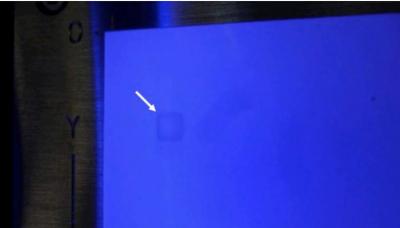Archer Exploration has printed and patterned ink formulations of human antibodies on graphene-based biosensor components derived from the company’s Campoona graphite. Archer reports that ink formulations comprised primarily of human antibody immunoglobulin G (IgG) as the active constituent were successfully prepared and printed using proprietary methods.
 An antibody ink formulation printed and patterned onto a resin-coated paper substrate
An antibody ink formulation printed and patterned onto a resin-coated paper substrate
The IgG inks were printed on resin-coated paper and a number of graphene-based electrodes and were able to withstand the chemical and physical processes in the formulation, printing, and post-printing steps.
One of the biggest challenges to printable biosensors involves the scalable fabrication of integrated componentry capable of multiplexing detecting a number of different diseases simultaneously using the same specimen. The development of printable biosensors will hopefully impact industries servicing human health, including point of care diagnostics and medical devices.
Archer CEO Dr Mohammad Choucair said: We were able to formulate inks incorporating process compatible biomaterials provided by our German Biotech partners, and the team at the ARC Graphene Hub were able to print them on a number of our biosensor components. This concerted effort addressed a key technical barrier to realizing a globally competitive biosensor, that of digitizing the manufacturing of critical biosensor componentry that could allow for multiplexing. It has provided strong support for a number of claims in our provisional patent, which legally protects this competitive advantage and provides a means for commercial exploitation of the IP.
Archer’s provisional patent on the biosensor technology IP has been published in the Australian Official Journal of Patents. The company is the sole applicant of the provisional patent, maintaining 100% ownership of the biosensor technology IP. Archer has until 15 February 2020 to consider maturing the application to a full patent.

